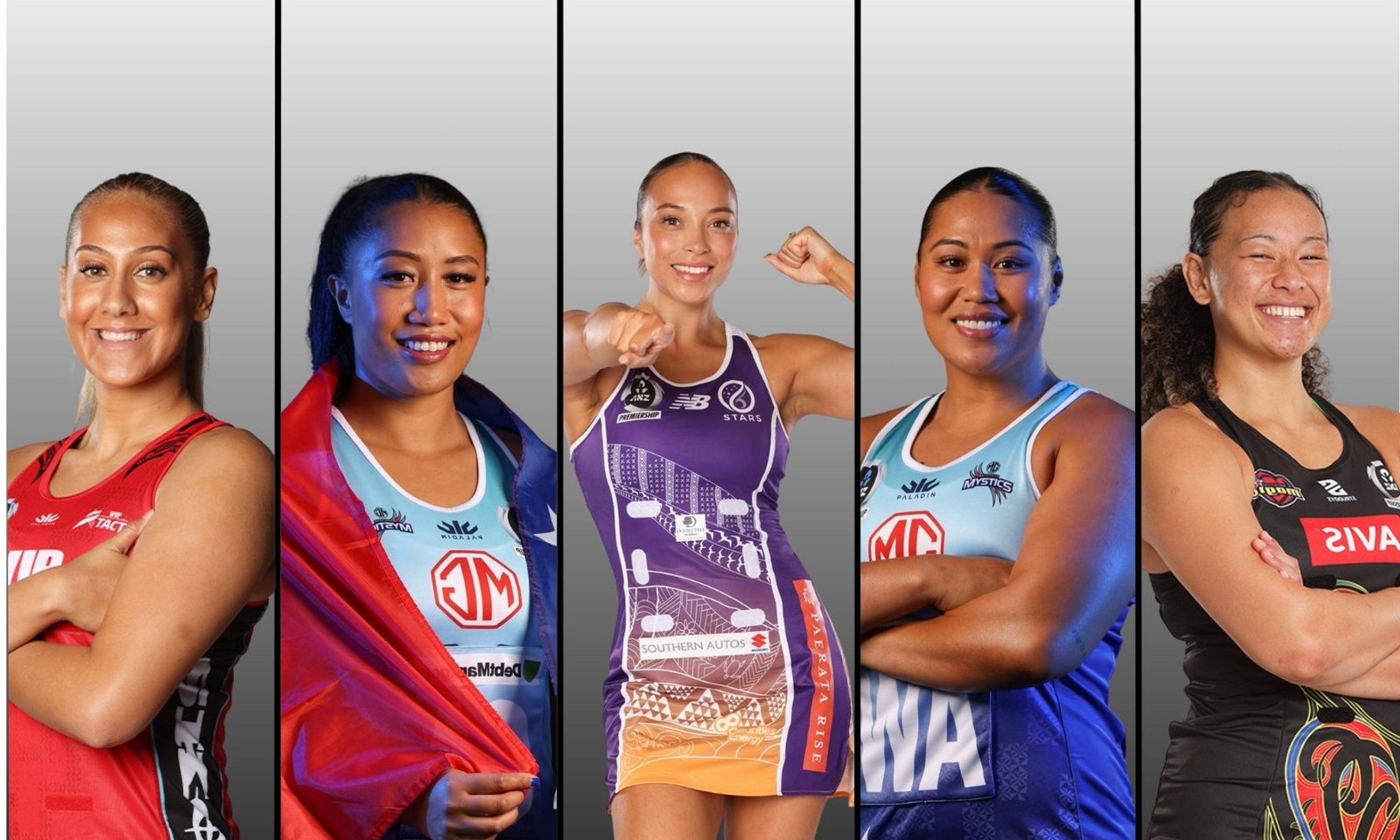

A group of men, including Tupua Tamasese Lealofi III (dressed in white), gathered around the office of the Mau - with the slogan Samoa Mo Samoa over the door, c 1928.
Photo/ Wikipedia Commons
Sāmoa's Black Saturday - Learning about indigenous non-violent resistance
Remembering the bond between Māori and Sāmoan leaders that helped shape strategies for contesting the violence of colonialism with non-violent resistance.



Solomon Islands takes bold step to raise marriage age to 18

South Auckland doctor inspires change through visible excellence and community strength

Socioeconomic barriers continue to widen the Pacific education gap - Auckland principal


Solomon Islands takes bold step to raise marriage age to 18

South Auckland doctor inspires change through visible excellence and community strength
In Samoa, December 28, 1929 is remembered as Black Saturday.
It was the day New Zealand armed forces took a machine gun and opened fire on peaceful protestors in Apia, killing the leader of the Mau movement, High Chief Tupua Tamasese Lealofi-o-ā'ana III.
His last words were, "Samoa filemu pea, ma si o'u toto ne'i ta'uvalea, a ia aoga lo'u ola mo lenei mea” - My blood has been spilt for Samoa. I am proud to give it. Do not dream of avenging it, as it was spilt in peace. If I die, peace must be maintained at any price.
It is an event that Samoans know well, but one that the diaspora is still learning about.
Lemoa Henry Fesuluai, a Professional Teaching Fellow from Auckland University’s faculty of Maori and Pacific Studies, says recent efforts have allowed knowledge of the Mau movement to grow.
“Outside of Samoa, it wasn’t taught in schools, it wasn’t taught in our homes,” he says.
“We learned songs such as the Fana Taavili (machine gun) song. I didn’t know that that was a historical piece or historical text, let alone did I know about how Samoans or our ancestors maintained the history through those chants and other things like that.
“I didn’t really learn about Black Saturday until I went to university. I didn’t know about the Mau movement or key aspects such as seeking independence," he says.
"For Samoans, just as long as that song (Fana Taavili) is around, that was enough to discuss that moment in history.”
The Mau, described by colonial masters at the time as a rebel group, was established by Samoans in the 1920s as a political movement advocating for Samoa without New Zealand rule - Samoa Mo Samoa.
New Zealand’s paternalistic policies, authoritarian rule, interference in traditional authority sowed much discontent in the Samoan population.
A foundation for much of those grievances stemmed from the inept handling of the 1918 Spanish flu which swept through Samoa, after colonial authorities allowed infected passengers on a visiting ship to disembark in Apia. As a result, more than 20 per cent of the Samoan population died from the disease.
In 2002, the then New Zealand Prime Minister Helen Clarke apologised for the unquarantined vessel and the killing of nine people on Black Saturday.
Fesuluai acknowledges recent efforts to make sure the history is not lost in time, but more still needs to be done.
Remembering his time teaching at Mangere College he says the subject of Samoa's independence should be introduced from early childhood.
“By the time you introduce this stuff in college they don't believe it, they don’t accept it, they’re not at that maturity state where they can critique. So we pick it up again at Year 11, 12 and 13 - then we go into critical thinking.”
“There's not enough resources designed at a secondary level Year 9 or below to support and scaffold that learning.”
Equally important is ensuring the history is taught accurately. A current popular but incorrect narrative is that Samoa had a peaceful movement before India’s Mahatma Gandhi. But that account ignores the fact that Gandhi ran his first campaign of civil disobedience in 1905, when he was still in South Africa.
It’s also probably not well known that it’s more likely the Mau borrowed the ideals of peaceful protest from the Maori prophet Te Whiti o Rongomai and Parihaka.
Historian Patricia O'Brien recalls a friendship between Māui Pōmare, the long serving Minister of the Cook Islands and the first Māōri doctor, and ‘Ta’isi O.F. Nelson, a political campaigner and statesman who led the Mau in the 1920s and 1930s, in her paper Ta‘isi O.F. Nelson and Sir Maui Pomare Samoans and Māori Reunited.
In May 1929, a few months before he was killed, the Mau leader Tupua Tamasese had been detained by New Zealand authorities in Auckland's Mt Eden Prison.
Pōmare wrote to ‘Ta’isi O.F. Nelson after he visited Tupua Tamasese in jail, reminding his “Brother” what his famous forebear Te Whiti o Rongomai [Parihaka] had said: ‘The pen is mightier than the sword’.
O’Brien writes that the descendants of Pomare, ‘Ta’isi and Tamasese came together to mark Pomare Day at Owae Marae in Waitara, Taranaki on 29 June 2013.
“It was remembered (at the event) that this friendship shaped the course of this history, reuniting Māori and Samoans through their Polynesian traditions and for the first time uniting them through strategies of contesting the violence of colonialism with non-violent resistance.”
That gathering was led by Ta‘isi's grandson and the Samoan head of state, Tui Atua Tupua Tamasese Ta‘isi Efi, along with other members of the Ta‘isi āiga, local dignitaries and the Samoan community of Taranaki.
Michel Mulipola, aka The Bloody Samoan, a Cultural Consultant for Walt Disney Animation Studios, has also uncovered more about his family connection with the Mau movement.
“My great-grandfather, Mata'utia Karauna Solomona, was the secretary for the Mau,” Mulipola says.
“According to some reports, he was targeted on Aso Pogisā as a person of interest and the attempted arrest resulted in a melee where a New Zealand policeman was apparently assaulted with a cornet, my great-grandfather's instrument of choice,” Mulipola said in an IG post.
While helping write and translate a petition for self governance to the New Zealand government on behalf of the Mau and Sāmoan people, Mulipola’s grandfather would later read that he was also a target in the same event at which Tamasese was shot.
Standing at a protest march for a ceasefire in Palestine early December 2023, the parallels of indigenous people being oppressed are not lost on Mulipola.
He recreated the uniform of the Mau, a purple cloth with a white stripe at the bottom, for the Palestine Peace rally.
“In these trying times with what’s happening in Palestine, what’s happening with the attack on Māori rights here in Aotearoa, as someone who wants to stand up and fight for their liberation, their fight today was our fight yesterday,” he says.
“So for me, I feel like wearing the uniform of the Mau is only right and I feel like more of us Samoans who want to fight for these causes and stand in solidarity, wearing the uniform of the Mau is a visual reminder of our fight and how we get to fight for these people today through that.”